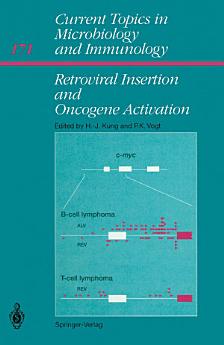Retroviral Insertion and Oncogene Activation
Hsing-Jien Kung · Peter K. Vogt
2012年12月 · Current Topics in Microbiology and Immunology 第 171 冊 · Springer Science & Business Media
電子書
179
頁
report評分和評論未經驗證 瞭解詳情
關於本電子書
An integrated retrovirus effectively becomes part of the cellular genome, but with the difference that the virus to a large extent retains control over its own expression through nontranslated sequences in the long terminal repeat (L TR). Some retroviruses also code for nonstructural proteins that further regulate proviral expression. Integration changes the cell genome; it adds viral genes, and in the case of transducing retroviruses also adds cell-derived oncogenes that have been incorporated into the viral genome. Integration can also have consequences for cellular genes. The transcriptional signals in a provirus can activate expression of neighboring cellular genes; the integration even can disrupt and thus inactivate cellular genes. These effects of retroviral genomes take place in cis; they are referred to as insertional mutagenesis and are the subject of this volume. Almost 10 years have passed since W. Hayward, S. Astrin, and their colleagues found that in B cell lymphomas of chickens, induced by avian leukosis virus, transcription of the cellular proto-oncogene myc was upregulated through the integration of a complete or partial provirus in its vicinity. This landmark discovery suggested a mechanism by which retro viruses that do not carry cellular oncogenes in their genome ("nonacute retroviruses") can cause cancer. It contributed the first evidence for the carcinogen potential of oncogenes that are not part of a viral genome.
為這本電子書評分
歡迎提供意見。
閱讀資訊
智慧型手機與平板電腦
筆記型電腦和電腦
你可以使用電腦的網路瀏覽器聆聽你在 Google Play 購買的有聲書。
電子書閱讀器與其他裝置
如要在 Kobo 電子閱讀器這類電子書裝置上閱覽書籍,必須將檔案下載並傳輸到該裝置上。請按照說明中心的詳細操作說明,將檔案傳輸到支援的電子閱讀器上。











